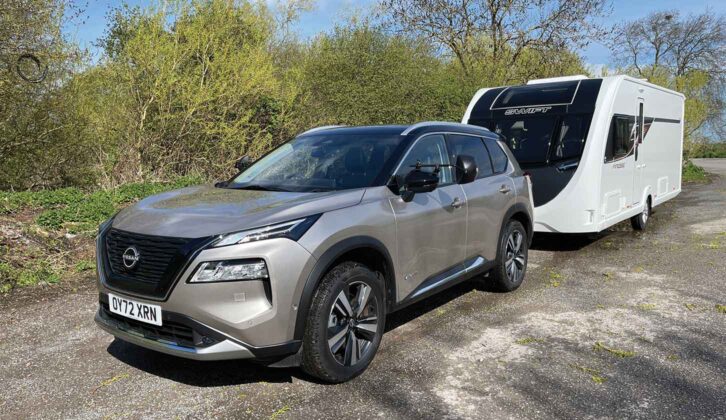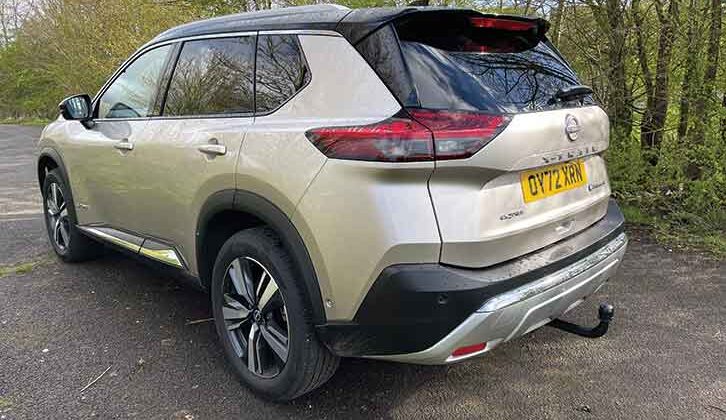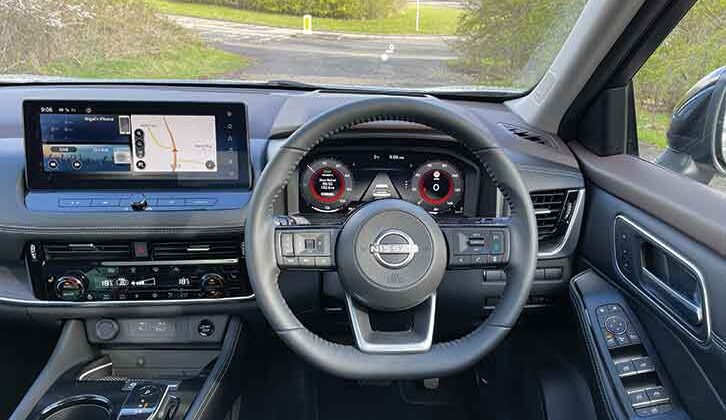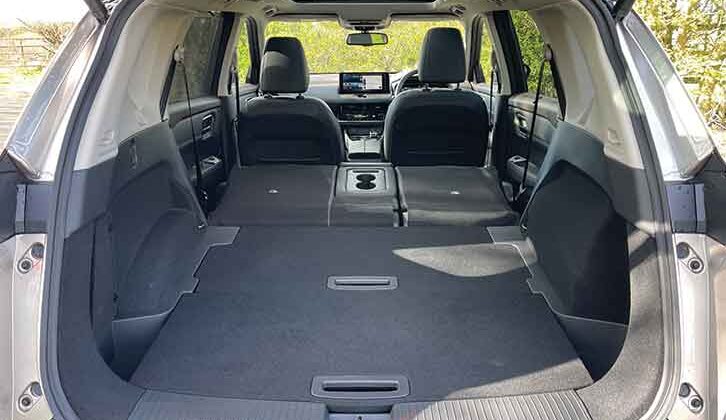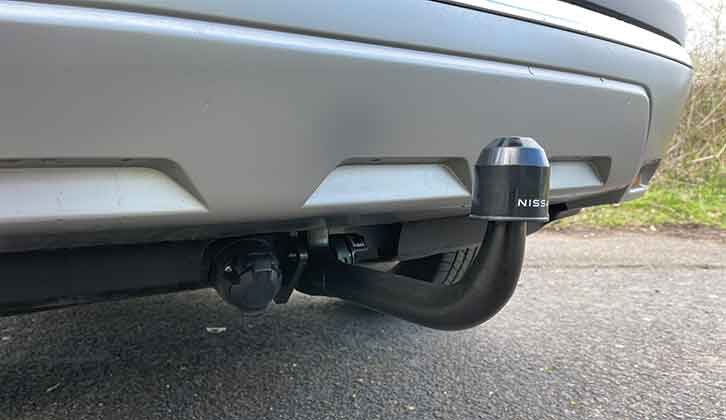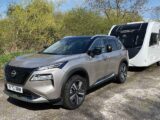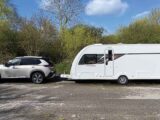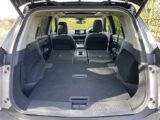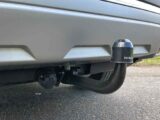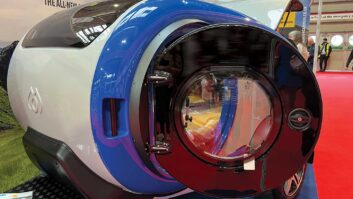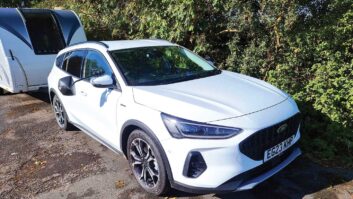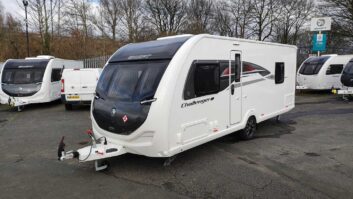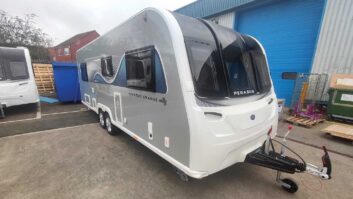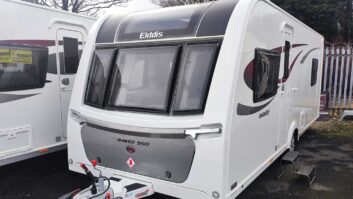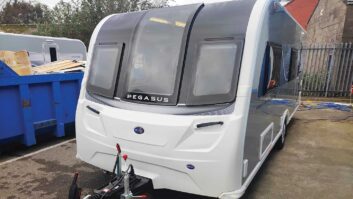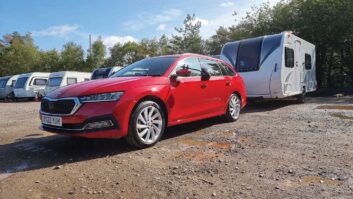Nissan has introduced a new generation of the popular X-Trail SUV. The version we’re testing here is the e-4orce Tekna, a 4×4 hybrid.
The electric motors driving the wheels get power from the 1.5-litre three-cylinder petrol engine, so it’s self-contained and never needs to be plugged in.
What are we looking for?
As it uses the clever hybrid system, we’re not only looking for a large, practical SUV with good road manners whether solo or towing, but also for a vehicle that’s practical and economical to use on a day-to-day basis, important factors when looking for the best SUV for towing.
Towing ability of the Nissan X-Trail e-4orce Tekna
The advantage of a self-charging hybrid tow car is that it can be used in the same way you would an internal-combustion car, so there is no waiting about for charging points to do their thing: you just fill up with (in this case) petrol and go on your way.
The X-Trail is a relative lightweight when it comes to large 4x4s or SUVs, weighing in with a kerbweight of 1880kg, but it has an excellent towing limit almost equal to that, meaning experienced drivers will have a huge range of tourers to choose from.
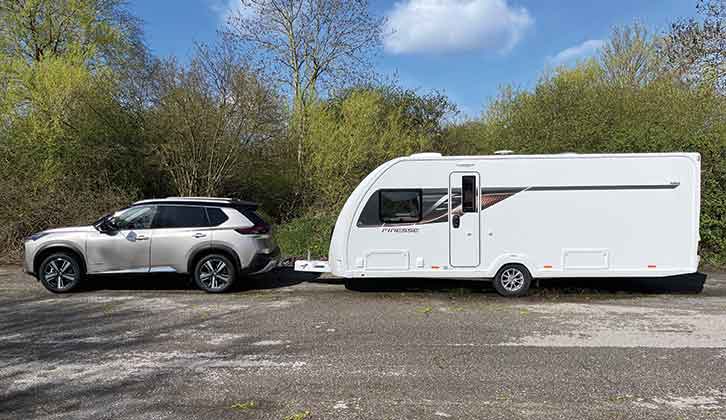
We hitched up a Swift Finesse 580 borrowed from Brayford Leisure, Lincoln, with a MiRO of 1306kg, and noticed that the ATC fitted to the caravan didn’t operate when we connected the electrics. Checking that the car’s 13-pin socket has been fully installed is something you might need to do.
On the road, the X-Trail made light work of towing the Swift, as you would expect with a huge 387lb ft of torque available, and even laden to its maximum, we wouldn’t expect much difference in performance.
The tow car engine (which was working hard to generate the power at times) could be heard occasionally, but in the main, the car was very refined.
Stability was also excellent, with only the merest hint of movement when overtaking HGVs at motorway speeds. Milenco towing mirrors attached with ease, too, which isn’t a given with some new vehicles.
As a tow car, the X-Trail is excellent. It’s punchy, comfortable and refined, but there is a bit of a sting in the tail, and that is economy. Despite favourable conditions, we averaged an indicated 21.4mpg on our test (and none of that was in town).
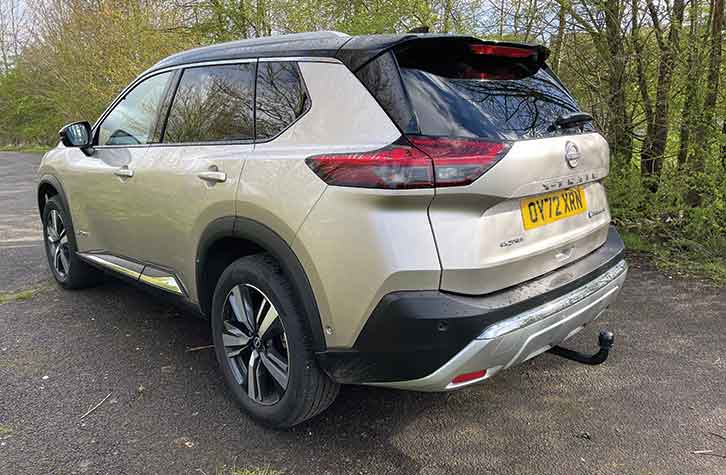
Reversing was also an issue, as the outfit would only go back a metre or so before the car slammed on the brakes. We imagine that’s more down to the 13-pin socket fitting and programming than anything else.
Solo driving the Nissan X-Trail e-4orce Tekna
The more we drove the X-Trail, the more we liked it. It’s nippy off the mark, easily cruises at motorway speeds and gives a decent punch for overtaking manoeuvres when required. If it was refined when towing, it was even better when driven solo, with the engine barely audible most of the time. Three-cylinder engines can be quite ‘thrummy’ when worked, but we had to check that the Nissan didn’t have a four-cylinder version, it was so quiet.
The X-Trail isn’t quite the last word in handling and there is some body roll when pushed, but this is a large SUV, not a hot hatch (despite on-paper figures suggesting that it might give a few a run for their money). At all times, it felt totally secure and was a very pleasant drive.
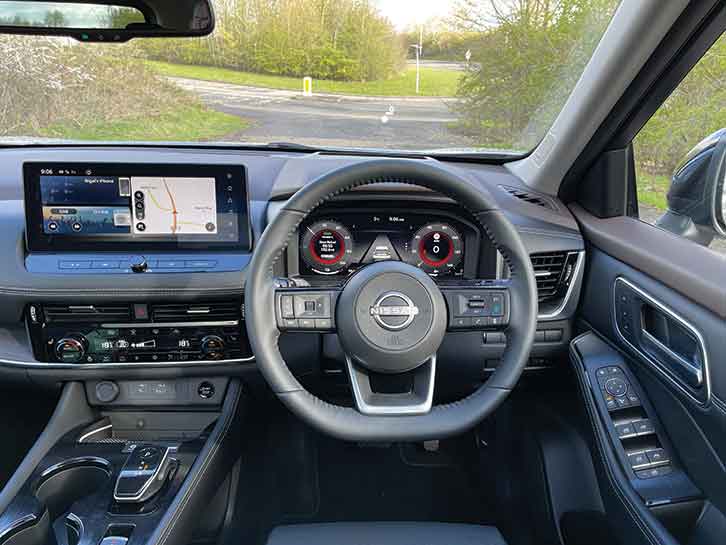
The various controls are a mixture of buttons and touches of the large central screen. It feels as though the designers have thought about what they’re doing in so much as things like adjusting the heater temperature is a simple twist of a button, as is adjusting the volume of the radio (there are buttons on the steering wheel for this, too).
So many new cars have such convoluted ways of doing things, it’s nice to see that function has taken priority over form for once. That’s not to say the X-Trail isn’t well-laden with tech, though.
Space & practicality in the Nissan X-Trail e-4orce Tekna
The Nissan is a spacious car. It’s easy to get into a comfortable driving position in the electrically adjustable seat, and the front passenger seat is also electrically adjustable.
There’s the merest hint of a transmission tunnel in the rear, but three should be able to travel long distances in comfort. Despite the glass roof, the headroom is very good.
Seven-seat versions are available, although space in the third row is tight.
The boot is an excellent size and should be able to accommodate most if not all of the caravan essentials you’re taking with you.
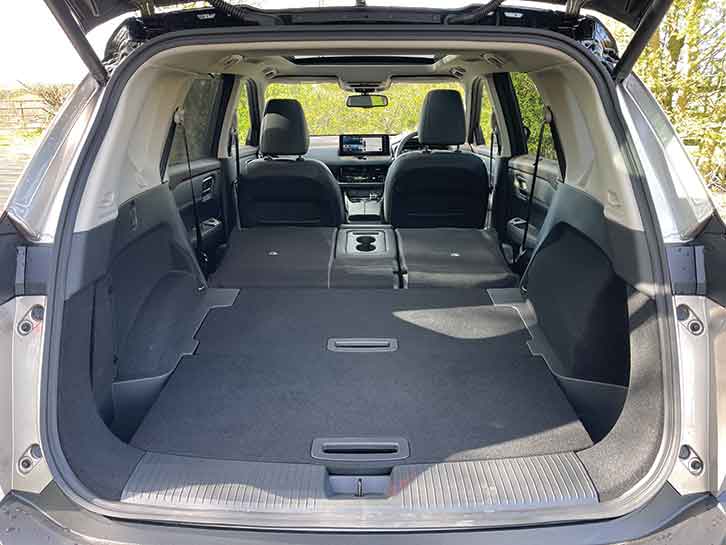
The backrests of the rear seats can be made a bit more upright as and when required, to provide a little extra luggage space without fully folding them.
Although the rear seats don’t fold totally flat, they’re not far from it.
The car is well built and the X-Trail was devoid of both squeaks and rattles.
There’s a wireless charging pad and several USB ports (including a USB-C) dotted throughout the car, and plenty of useful storage space.
The detachable towbar was easy to fit, although attaching the electrics was a get-down-on-your-knees job, because the socket is tucked well underneath the rear of the car.
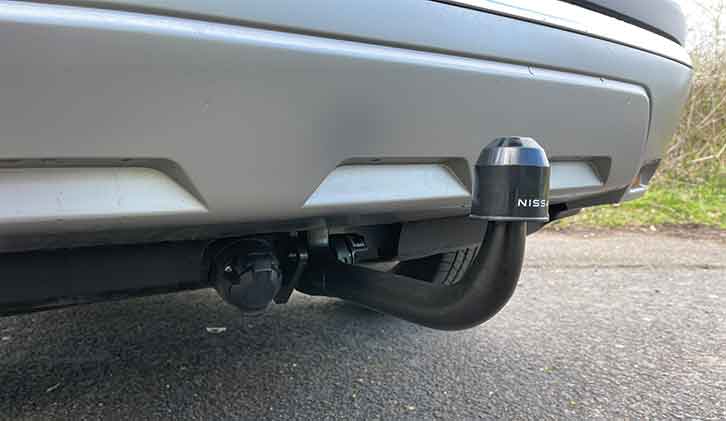
Buying & owning
The Nissan costs £45,310, so is reasonably priced in its class, and in Tekna trim, is very well equipped indeed. Solo, it’s also reasonably economical for its size.
Verdict
The latest-generation Nissan X-Trail is a thoughtfully designed, well-built vehicle, which happens to have excellent towing ability (notwithstanding its economy). In addition, it makes a practical, refined and comfortable solo drive.
If you’re interested in buying an older version of the X-Trail, take a look at our used Nissan X-Trail tow car guide too.
Or you could try:
- Škoda Enyaq Coupé iV vRS: this sporty drive is a great choice for towing a lightweight caravan
- BMW 320i Touring M Sport: fun to drive both solo and hitched up, the M Sport makes a great tow car
Technical spec of the Nissan X-Trail e-4orce Tekna
- Price: £45,310
- What Car? Target Price: £42,897
- Retained value after three years: 56%
- Kerbweight: 1880kg
- 85% of kerbweight: 1598kg
- Gross vehicle weight: 2345kg
- Max towing limit: 1800kg
- Gross train weight: 3995kg
- Towball limit: 100kg
- Towball and electrics: £465 fixed, £645 detachable
- Boot size min/max: 575/1396 litres
- Payload: 465kg
- Test conditions: Dry, breezy
- Engine size: 1498cc
- Power (hp)/rpm: 211/4600
- Torque (lb ft)/rpm: 387/2400-4400
- Official combined economy: 43.5mpg
- Towing economy: 21.4mpg
- CO2 emissions: 146g/km
- 1st/2nd year car tax: £245/£560
- Insurance group: 31E
If you’ve enjoyed reading this article, why not get the latest news, reviews and features delivered direct to your door or inbox every month. Take advantage of our brilliant Practical Caravan magazine SUBSCRIBERS’ OFFER and SIGN UP TO OUR NEWSLETTER for regular weekly updates on all things caravan related.
Technical Specifications
| Engine Size | 1498 cc |
| Kerbweight | 1880 kg |
| 85% KW | 1598 kg |
| Towball Limit | 100 kg |
| Maximum Towing Limit | 1800 kg |
| Power | 211 bhp |
| Torque | 387 lb ft |
| Offical MPG | 43.5 mpg |
| Towing MPG | 21.4 mpg |
| CO₂ | 146 g/km |
